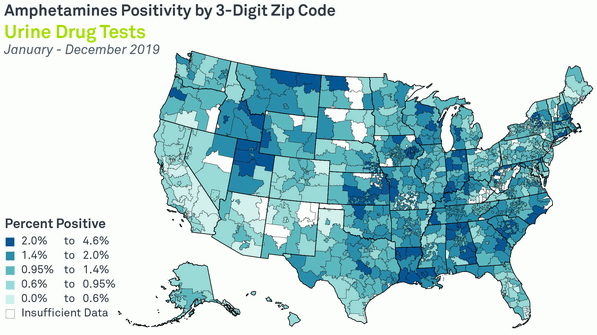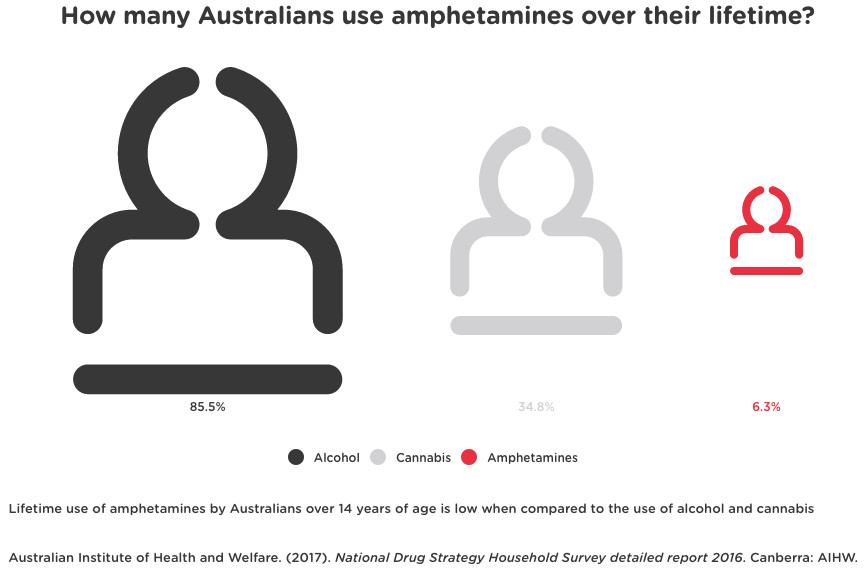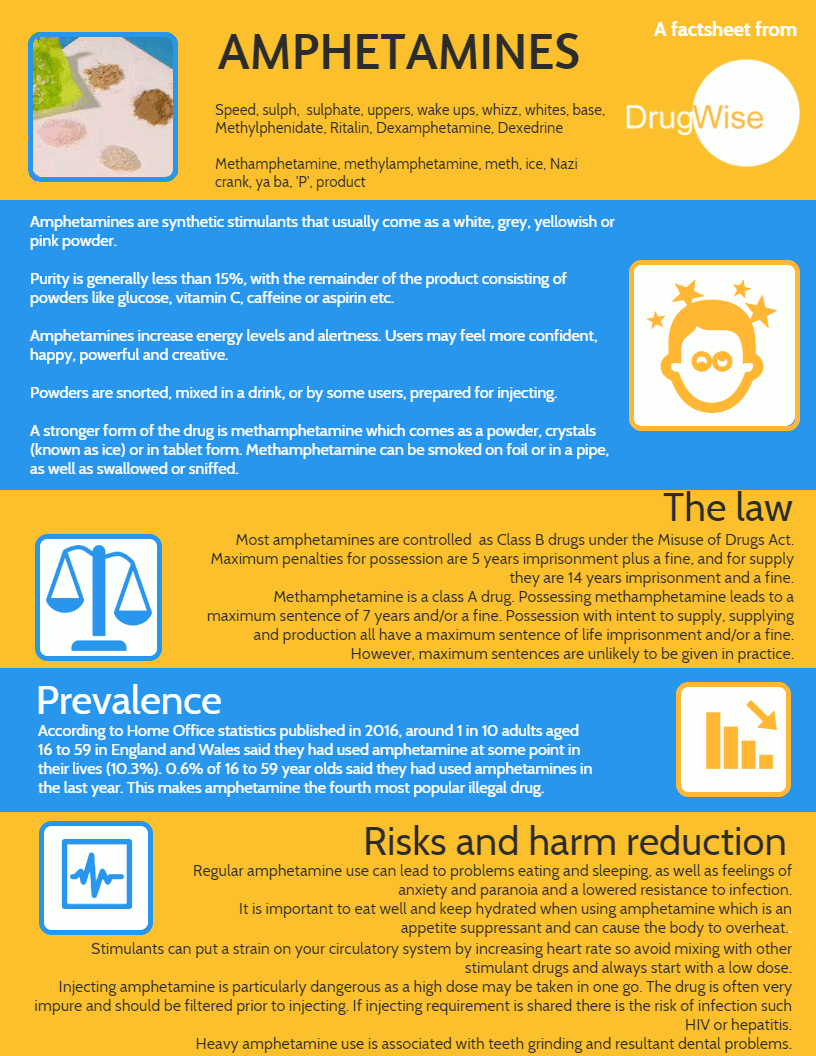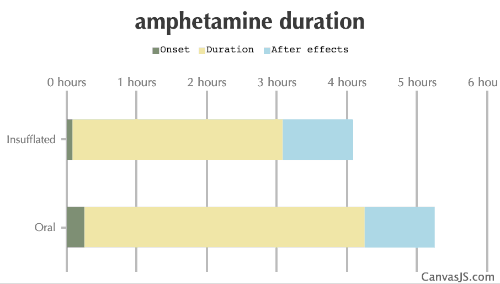[ Home ] [ Controlled Substances ] [ Stimulants ]
AMPHETAMINE
|
Amphetamine is short for alpha-methylphenethylamine
Amphetamines are stimulants that speed up the body's system. Many are legally prescribed and used to treat attention-deficit hyperactivity disorder (ADHD). Amphetamine was first marketed in the 1930s as Benzedrine in an over-the-counter inhaler to treat nasal congestion. By 1937 amphetamine was available by prescription in tablet form and was used in the treatment of the sleeping disorder narcolepsy and ADHD. Over the years, the use and abuse of clandestinely produced amphetamines have spread. Today, clandestine laboratory production of amphetamines has mushroomed, and the abuse of the drug has increased dramatically.
Amphetamines can look like pills or powder. Common prescription amphetamines include methylphenidate (Ritalin or Ritalin SR), amphetamine and dextroamphetamine (Adderall), and dextroamphetamine (Dexedrine).
Amphetamines are generally taken orally or injected. However, the addition of "ice," the slang name of crystallized methamphetamine hydrochloride, has promoted smoking as another mode of administration. Just as "crack" is smokable cocaine, "ice" is smokable methamphetamine.
The effects of amphetamines and methamphetamine are similar to cocaine, but their onset is slower and their duration is longer. In contrast to cocaine, which is quickly removed from the brain and is almost completely metabolized, methamphetamine remains in the central nervous system longer, and a larger percentage of the drug remains unchanged in the body, producing prolonged stimulant effects. Chronic abuse produces a psychosis that resembles schizophrenia and is characterized by paranoia, picking at the skin, preoccupation with one's own thoughts, and auditory and visual hallucinations. Violent and erratic behavior is frequently seen among chronic users of amphetamines and methamphetamine.


https://www.dea.gov/sites/default/files/2018-06/drug_of_abuse.pdf#page=50


https://www.questdiagnostics.com/home/physicians/health-trends/drug-testing/map_amp/


https://infogram.com/amphet-vs-alcohol-and-cannabis-1gv4m7jxrwk0m18
Adderall: America's Favorite Amphetamine
Adderall is a clever brand and a deceptive brand. In America, amphetamine has traditionally been associated with tweakers, speed freaks, bikers, truckers and all-night sex orgies. Adderall changed all that. Stimulants like Ritalin have long been shown to help people with ADD and ADHD (attention-deficit hyperactivity disorder) concentrate for longer periods. So in 1996, Shire Pharmaceuticals introduced Adderall, a patented blend of amphetamine salts, to compete in the market for ADD/ADHD medications. The product was so successful that in 2001, Shire introduced the Adderall XR capsule in order to supply a low but steady dose to users all day long. Adderall XR is marketed as a productivity drug to help people with ADD, ADHD or narcolepsy remain alert and focused, but because it's essentially pure pharmaceutical amphetamine, it quickly became the prescription stimulant of choice for college students, wage laborers, the military, and pretty much everybody else.
The molecule for amphetamine is in the public domain, so it's impossible for a pharmaceutical company to patent it. That means there's no profit to be made by producing amphetamine for pharmaceutical use. But Shire found a way around this problem. Adderall is a custom blend of four different types of amphetamine salts - basically two mirror versions of the amphetamine molecule packaged in four separate ways. This is an old patent-medicine trick: When you're synthesizing a molecule in chemistry, you must attach it to a salt (such as an aspartate or sulphate) so you can easily crystallize or dissolve it. However, you can't patent amphetamine aspartate or amphetamine sulfate - but if you make a custom mix of these salts, you can call it a patent drug, even though both salts carry the exact same amphetamine molecule when they dissolve in the bloodstream.

https://www.huffingtonpost.com/high-times/adderall-amphetamine_b_4174297.html
The Drugs That Built a Super Soldier
Since World War II, little research had determined whether amphetamine had a positive impact on soldiers' performance, yet the American military readily supplied its troops in Vietnam with speed. "Pep pills" were usually distributed to men leaving for long-range reconnaissance missions and ambushes. The standard army instruction (20 milligrams of dextroamphetamine for 48 hours of combat readiness) was rarely followed; doses of amphetamine were issued, as one veteran put it, "like candies," with no attention given to recommended dose or frequency of administration. In 1971, a report by the House Select Committee on Crime revealed that from 1966 to 1969, the armed forces had used 225 million tablets of stimulants, mostly Dexedrine (dextroamphetamine), an amphetamine derivative that is nearly twice as strong as the Benzedrine used in the Second World War. The annual consumption of Dexedrine per person was 21.1 pills in the navy, 17.5 in the air force, and 13.8 in the army.
"We had the best amphetamines available and they were supplied by the U.S. government," said Elton Manzione, a member of a long-range reconnaissance platoon (or Lurp). He recalled a description he'd heard from a navy commando, who said that the drugs "gave you a sense of bravado as well as keeping you awake. Every sight and sound was heightened. You were wired into it all and at times you felt really invulnerable." Soldiers in units infiltrating Laos for a four-day mission received a medical kit that contained, among other items, 12 tablets of Darvon (a mild painkiller), 24 tablets of codeine (an opioid pain killer), and six pills of Dexedrine. Before leaving for a long and demanding expedition, members of special units were also administered steroid injections.

https://www.theatlantic.com/health/archive/2016/04/the-drugs-that-built-a-super-soldier/477183/
Amphetamine Factsheet:


https://www.drugwise.org.uk/amphetamines/
| Duration: A very popular CNS stimulant available on prescription and black markets. Recreational in high doses, producing mild euphoria and an abundance of energy. Popular in eastern europe and the US. NOTE: Street amphetamine is generally very impure, if you're working with a more pure chemical, lower doses will have greater effects. | |||
| Route | Onset | Duration | After Effects |
|---|---|---|---|
| Tripsit Factsheets | |||

Amphetamine Basic Information: http://drugs.tripsit.me/amphetamine | |||
| Insufflated: | 5-10 minutes | 3-6 hours | 1-12 hours |
| Oral: | 15-30 minutes | 4-8 hours | 1-12 hours |

| |||
Detection:
| |||
| Avoid: other stimulants, and depressants. Mixing depressiants and stimulants is very rough on the heart. MXE is also to be avoided (possibility of serotonin syndrome) | |||
Aliases:
| |||
| Marquis: Strong reddish orange - Dark reddish brown | |||
| Effects: Increased focus, abundance of energy, racing thoughts, elevated heartrate. | |||
Important Information:
Amphetamine may be habit-forming, and this medicine is a drug of abuse. Tell your doctor if you have had problems with drug or alcohol abuse.Stimulants have caused stroke, heart attack, and sudden death in people with high blood pressure, heart disease, or a heart defect.
Do not use amphetamine if you have used an MAO inhibitor in the past 14 days, such as isocarboxazid, linezolid, phenelzine, rasagiline, selegiline, or tranylcypromine or have received a methylene blue injection.Amphetamine may cause new or worsening psychosis (unusual thoughts or behavior), especially if you have a history of depression, mental illness, or bipolar disorder.
Amphetamine may cause blood circulation problems that can cause numbness, pain, or discoloration in your fingers or toes. Call your doctor right away if you have: signs of heart problems - chest pain, feeling light-headed or short of breath; signs of psychosis - paranoia, aggression, new behavior problems, seeing or hearing things that are not real; signs of circulation problems - unexplained wounds on your fingers or toes.Avoid drinking alcohol.while you are taking this medicine.
Avoid drinking fruit juices or taking vitamin C at the same time you take amphetamine. These can make your body absorb less of the medicine.
Avoid driving or hazardous activity until you know how amphetamine will affect you. Your reactions could be impaired.
Interactions:
Drug Interactions (176) Alcohol/Food Interactions (3) Disease Interactions (15)
What other drugs will affect Amphetamine?
Ask your doctor before using a stomach acid medicine (including Alka-Seltzer or sodium bicarbonate). Some of these medicines can change the way your body absorbs amphetamine, and may increase side effects.Many drugs can interact with amphetamine. This includes prescription and over-the-counter medicines, vitamins, and herbal products. Tell your doctor if you are taking an anti-depressant or any other medication for mental illness; an antihistamine such as allergy medication; seizure drugs, or any over the counter medications.
A total of 176 drugs are known to interact with Amphetamine.
- 37 major drug interactions
- 131 moderate drug interactions
- 8 minor drug interactions
 Amphetamine Drug Information:
Amphetamine Drug Information:
https://www.drugs.com/amphetamine.html

http://www.cesar.umd.edu/cesar/drugs/amphetamines.pdf


https://www.accessdata.fda.gov/drugsatfda_docs/label/2007/011522s040lbl.pdf
| Maximum Dosage: | |
|---|---|
| Prescribers Digital Reference | |
| Adults: | 60 mg/day PO for ADHD or narcolepsy for immediate-release tablets. For extended-release Adderall XR capsules, 20 mg/day PO is the recommended dose; in clinical trials for adult ADHD, 60 mg/day PO was the highest titration dose used. For extended-release Mydayis capsules, 50 mg/day PO for ADHD. |
| Geriatric: | 60 mg/day PO for ADHD or narcolepsy for immediate-release tablets. For extended-release capsules, geriatric patients have not been specifically evaluated. |
| Adolescents: | 40 mg/day PO for ADHD or 60 mg/day PO for narcolepsy using immediate-release tablets; some experts recommend an off-label maximum of 60 mg/day PO if weight is greater than 50 kg for the treatment of ADHD. In clinical trials of extended-release Adderall XR capsules, titration doses were allowed up to 40 mg/day PO for weight 75 kg or less and from 50 to 60 mg/day PO for weight more than 75 kg; however, there was no consistent evidence that doses above 20 mg/day PO conferred additional benefit. For extended-release Mydayis capsules, 25 mg/day PO for ADHD. |
| Children: | 6 years and older: 40 mg/day PO for ADHD or 60 mg/day PO for narcolepsy using immediate-release tablets; some experts recommend an off-label maximum of 60 mg/day PO if weight is more than 50 kg for the treatment of ADHD. Maximum 30 mg/day PO for ADHD using extended-release Adderall XR capsules. For extended-release Mydayis capsules, safety and efficacy have not been established. |
| Children: | 3 to 5 years: Maximum dosage information is not provided by FDA-approved labeling; doses should not exceed 40 mg/day PO for immediate-release tablets. Do not use extended-release capsules. |
| Children: | Less than 3 years: Safety and efficacy have not been established. |
| Infants: | Not indicated. |
| Side Effects: |
| Get emergency medical help if you have signs of an allergic reaction: hives; difficult breathing; swelling of your face, lips, tongue, or throat. |
|---|
| RxList |

Adderall (amphetamine): https://www.rxlist.com/adderall-drug/patient-images-side-effects.htm |
Call your doctor at once if you have:
|
| Seek medical attention right away if you have symptoms of serotonin syndrome, such as: agitation, hallucinations, fever, sweating, shivering, fast heart rate, muscle stiffness, twitching, loss of coordination, nausea, vomiting, or diarrhea. |
| Long-term use of stimulant medicine can affect growth in children. Tell your doctor if your child is not growing at a normal rate while using this medicine. |
Common side effects may include:
|
| This is not a complete list of side effects and others may occur. Call your doctor for medical advice about side effects. You may report side effects to FDA at 1-800-FDA-1088. |
| Black Box Warnings: |
|---|
Abuse and dependence
|
Amphetamine is a potent central nervous system (CNS) stimulant that is used in the treatment of attention deficit hyperactivity disorder (ADHD), narcolepsy, and obesity. Amphetamine was discovered in 1887 and exists as two enantiomers: levoamphetamine and dextroamphetamine. The mode of therapeutic action in ADHD is not known. Amphetamines are thought to block the reuptake of norepinephrine and dopamine into the presynaptic neuron and increase the release of these monoamines into the extraneuronal space. At higher dosages, they cause release of dopamine from the mesocorticolimbic system and the nigrostriatal dopamine systems. Modulation of serotonergic pathways may contribute to the calming affect. Several currently prescribed amphetamine formulations contain both enantiomers, including Adderall, Dyanavel XR, and Evekeo, the last of which is racemic amphetamine sulfate. Amphetamine is also prescribed in enantiopure and prodrug form as dextroamphetamine and lisdexamfetamine respectively. Lisdexamfetamine is structurally different from amphetamine, and is inactive until it metabolizes into dextroamphetamine.
 Amphetamine:
Amphetamine:
https://drugs.ncats.io/drug/CK833KGX7E
Breastfeeding:
Summary of Use During Lactation:
In dosages prescribed for medical indications, some evidence indicates that amphetamine does not affect nursing infants adversely.The effect of amphetamine in milk on the neurological development of the infant has not been well studied.
Large dosages of amphetamine might interfere with milk production, especially in women whose lactation is not well established.Breastfeeding is generally discouraged in mothers who are actively abusing amphetamines.
One expert recommends that amphetamine not be used therapeutically in nursing mothers.Alternate Drugs to Consider:
- (Therapeutic use) Dextroamphetamine
- Lisdexamfetamine
- Methylphenidate
 Amphetamine Drug Levels and Effects:
Amphetamine Drug Levels and Effects:
https://www.ncbi.nlm.nih.gov/books/NBK501307/
Pediatric:
Appropriate studies have not been performed on the relationship of age to the effects of amphetamine tablets in children with obesity who are younger than 12 years of age, in children with narcolepsy who are younger than 6 years of age, and in children with ADHD who are younger than 3 years of age.Use of this medicine is not recommended in children younger than 17 years of age.
Appropriate studies have not been performed on the relationship of age to the effects of amphetamine extended-release oral suspension and extended-release oral disintegrating tablets in children with ADHD who are younger than 6 years of age.Use of this medicine is not recommended in children younger than 17 years of age.
Geriatric:
No information is available on the relationship of age to the effects of amphetamine tablets in geriatric patients.Other Medical Problems:
Make sure you tell your doctor if you have any other medical problems, especially:
- Agitation, severe
- Arteriosclerosis (hardening of the arteries), severe
- Drug abuse, history of
- Heart attack, recent
- Heart failure
- Heart or blood vessel disease (eg, cardiomyopathy, coronary artery disease)
- Heart rhythm problems (eg, arrhythmia, ventricular arrhythmia)
- Hypertension (high blood pressure), moderate to severe
- Hyperthyroidism (overactive thyroid)
- Stroke, history of - Avoid use in patients with these conditions
- Bipolar disorder (manic-depressive illness), or a family history of
- Blood vessel problems (eg, Raynaud disease)
- Depression, or a family history of
- Hypertension (high blood pressure), mild
- Psychosis (mental illness), history of
- Seizures, history of
- Tourette syndrome, or family history of - Use with caution. May make these conditions worse
 Amphetamine (Oral Route) (Dyanavel XR | Evekeo):
Amphetamine (Oral Route) (Dyanavel XR | Evekeo):
https://www.mayoclinic.org/drugs-supplements/amphetamine-oral-route/description/drg-20150941


http://www.emcdda.europa.eu/system/files/publications/621/EMCDDA-Europol_Amphetamine-joint-publication_319089.pdf

https://adf.org.au/wp-content/uploads/2018/12/Amphetamine-Fact-Sheet-FINAL.pdf

https://www.ncbi.nlm.nih.gov/pmc/articles/PMC3666194/

https://erowid.org/chemicals/amphetamines/
- A central nervous system stimulant
- Used in the treatment of attention deficit hyperactivity disorder (ADHD), narcolepsy, and obesity. Historically, it has been used to treat nasal congestion and depression.
Amphetamine is also used as an athletic performance enhancer and cognitive enhancer, and recreationally as an aphrodisiac and euphoriant.
- It is a prescription drug in many countries, and unauthorized possession and distribution of amphetamine are often tightly controlled
- Discovered in 1887.
- Its stimulant effects remained unknown until 1927
- Amphetamine had no medical use until late 1933, when it was sold as an inhaler under the brand name Benzedrine as a decongestant. The first amphetamine pharmaceutical was Benzedrine.
Currently, pharmaceutical amphetamine is prescribed as racemic amphetamine, Adderall, dextroamphetamine, or the inactive prodrug lisdexamfetamine.
During World War II, amphetamine and methamphetamine were used extensively by both the Allied and Axis forces for their stimulant and performance-enhancing effects.
Causes emotional and cognitive effects such as euphoria, change in desire for sex, increased wakefulness, and improved cognitive control. It induces physical effects such as improved reaction time, fatigue resistance, and increased muscle strength.
May impair cognitive function and induce rapid muscle breakdown.
Can result in psychosis (e.g., delusions and paranoia) which rarely occurs at therapeutic doses even during long-term use.
Are generally much larger than prescribed therapeutic doses and carry a far greater risk of serious side effects.Addiction is a serious risk with heavy recreational amphetamine use, but is unlikely to occur from long-term medical use at therapeutic doses.
Amphetamine-Type Drugs More Common Than Cannabis, U.N. Says - Criminal gangs are selling more cheap and easy-to-make amphetamine-type drugs, such as ecstasy and crystal meth, in new markets, and cannabis is now the only more widely used illegal drug, a United ... Monday September 12, 2011 - foxnews.com Amphetamine-type stimulants: speed and ice - Amphetamine-type stimulants (ATS) are produced both in Australia and imported from overseas. In recent years, consumers have rated ATS as relatively easy to access. But like many illegal drugs, where ... Illicit Amphetamine Use Increases Psychosis Risk by 5 Times - The use of illicit amphetamines, commonly known as 'speed' increases the risk of psychosis 5-fold over a ten-year period. The corresponding study has been published in the online journal ... Other Drug Detoxification – Cocaine, Amphetamine, Marijuana, LSD, Ecstasy - Cocaine is used either orally, by inhaling (called crack) or through injection. It is often used with other drugs such as heroin and alcohol. Stopping cocaine causes withdrawal symptoms like craving ... Effects of Amphetamine on Sensorimotor Gating and Neurocognition in Antipsychotic-Medicated Schizophrenia Patients - The experimental medicine strategy for identifying novel psychotherapeutics is facilitated by objective, quantitative laboratory-based measures that are impaired in patient groups, sensitive to drug ... Syria seizes amphetamine-based drugs headed for Saudi Arabia - DAMASCUS, SyriaDAMASCUS, Syria — Syrian authorities said Tuesday they seized over 500 kilograms (1,000 pounds) of amphetamine pills known by the brand name Captagon hidden in pasta packages in a van ... Large-Scale Drug Trafficking Scheme Foiled In Ukraine: Nearly 160 Kg Of Mephedrone And Amphetamine Seized - Nearly 160 Kg Of Mephedrone And Amphetamine Seized. As reported by Ukrinform, this was announced by the National Police of Ukraine. “The 'business' was organized by two men aged 31 and 45. The perpetr ... Amphetamine found in drugs raid - A BUNG, some burnt foil and a trace of amphetamine were found when drugs squad officers searched a Rhydyfelin man’s home. A BUNG, some burnt foil and a trace of amphetamine were found when drugs squad ... Hyderabad drug bust: Amphetamine worth Rs 8.5 crore seized, 3 held for peddling - Three individuals transporting Amphetamine, valued at 8.5 crore, were arrested by Hyderabad task force officers. K Nagaraju, assisted by A Vinod Kumar and Srisailam, was caught with the drug in ... Amphetamine dealer hid drugs in underwear - A DRUG dealer was jailed after amphetamine fell out of his underwear when he was searched by police. Gareth Dirk Olivier, aged 38, of Vesta Court, Coity Road, Bridgend, admitted possessing amphetamine ...
| ||
| Stimulants | Link to this page |






